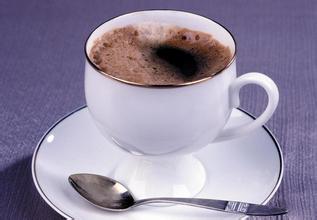How to make espresso powder in proportion to espresso powder
How to make espresso powder in proportion to espresso powder
For example, if you walk into the Vivace Espresso coffee shop in Seattle, USA, you usually get a cup of espresso with a gouache ratio of between 1:1 and 1. 5. The coffee shop's founder, David Schomer, was a pioneer in the Italian espresso industry at the time, bringing the coffee to the northwestern United States for the first time. Italian espresso is extremely strong and thick, but lacks purity and dryness. Extremely low gouache ratio, coupled with deep-roasted, low-altitude grown coffee beans, the resulting coffee chocolate and caramel flavor is very strong. When Xiao Mo first introduced this kind of coffee to the United States, Americans still drank coffee with milk. This very strong espresso brings a new coffee experience to the local people.
As light-roasted, high-altitude coffee has become more popular in the past few years, the proportion of water popular on the market has also changed. Today, coffee shops in the United States, Europe and Australia are accustomed to using the gouache ratio of "Normale" espresso (1purl 1.5 or 1:2). As more coffee shops use individual coffee to make espresso, there is also a higher demand for gouache ratio. Increasing the gouache ratio can improve the purity and dryness of coffee and make lightly roasted coffee beans grown at high altitude easier to extract.
Of course, when it comes to espresso, we have to mention the hometown of the espresso machine. If you have ever visited Italy, you must have been to an Italian espresso. To your surprise, the gouache ratio used by the locals is usually around 1:3. This traditional recipe has been around for a hundred years. Therefore, while most countries in the United States and Europe use 16-19 grams of coffee powder to make 24-38 grams of coffee, Italians prefer to use 7 grams of coffee powder to make 21 grams of espresso.
To master the gouache ratio, you can use a constant amount of coffee powder (for example, 18 grams) in the exercise, try to match different total coffee weight, and then compare the differences in taste, purity and mellowness. You need to decide the final gouache ratio according to your personal preference. Only through constant practice and exploration can you make an espresso that really suits you.
People have different taste preferences for espresso in different countries of the world. Even in the same country, the proportion of gouache used in different cafes varies. Although espresso is not the oldest coffee drink, it has become an important part of each country's culture, so each country's use of gouache ratio is unique.
For example, if you walk into the Vivace Espresso coffee shop in Seattle, USA, you usually get a cup of espresso with a gouache ratio of between 1:1 and 1. 5. The coffee shop's founder, David Schomer, was a pioneer in the Italian espresso industry at the time, bringing the coffee to the northwestern United States for the first time. Italian espresso is extremely strong and thick, but lacks purity and dryness. Extremely low gouache ratio, coupled with deep-roasted, low-altitude grown coffee beans, the resulting coffee chocolate and caramel flavor is very strong. When Xiao Mo first introduced this kind of coffee to the United States, Americans still drank coffee with milk. This very strong espresso brings a new coffee experience to the local people.

Important Notice :
前街咖啡 FrontStreet Coffee has moved to new addredd:
FrontStreet Coffee Address: 315,Donghua East Road,GuangZhou
Tel:020 38364473
- Prev

3 Ways to Control Roast Degree-Getting good coffee beans is no longer difficult.
First, the visual, sound, smell changes to control the degree of baking human five senses is the most widely used and is the best judgment tool to control the degree of baking by perception. Just like when you watch a movie and think it's over, you know it naturally. Roast coffee beans are like this. You feel that its smell, color and sound have reached a certain level and you know it's what you want. II. To
- Next

Description of taste and flavor of iron pickup coffee introduction to the producing area of grinding scale
The so-called new variety actually refers to catimor (Katimo), which is a hybrid of the timor species of the Roberta family and Arabica. Compared with the old varieties, it lacks rich aroma and taste, and has a relatively shallow smell of grass and soil, but its advantages are disease resistance and easy management.
Related
- Beginners will see the "Coffee pull flower" guide!
- What is the difference between ice blog purified milk and ordinary milk coffee?
- Why is the Philippines the largest producer of crops in Liberia?
- For coffee extraction, should the fine powder be retained?
- How does extracted espresso fill pressed powder? How much strength does it take to press the powder?
- How to make jasmine cold extract coffee? Is the jasmine + latte good?
- Will this little toy really make the coffee taste better? How does Lily Drip affect coffee extraction?
- Will the action of slapping the filter cup also affect coffee extraction?
- What's the difference between powder-to-water ratio and powder-to-liquid ratio?
- What is the Ethiopian local species? What does it have to do with Heirloom native species?

